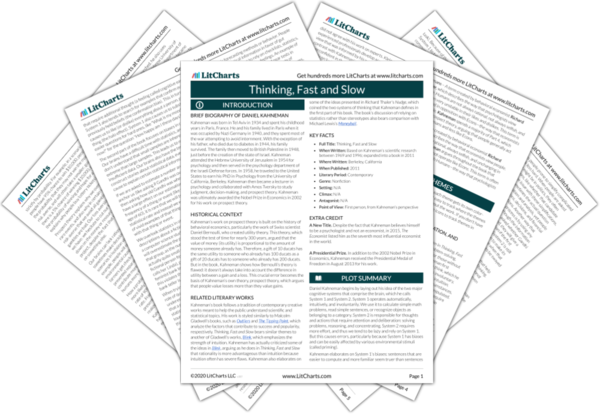Heuristic Quotes in Thinking, Fast and Slow
Constantly questioning our own thinking would be impossibly tedious, and System 2 is much too slow and inefficient to serve as a substitute for System I in making routine decisions. The best we can do is a compromise: learn to recognize situations in which mistakes are likely and try harder to avoid significant mistakes when the stakes are high.

Unlock explanations and citation info for this and every other Thinking, Fast and Slow quote.
Plus so much more...
Get LitCharts A+The bat-and-ball problem is our first encounter with an observation that will be a recurrent theme of this book: many people are overconfident, prone to place too much faith in their intuitions.
The investment of attention improves performance in numerous activities—think of the risks of driving through a narrow space while your mind is wandering—and is essential to some tasks, including comparison, choice, and ordered reasoning. However, System 2 is not a paragon of rationality. Its abilities are limited and so is the knowledge to which it has access.












